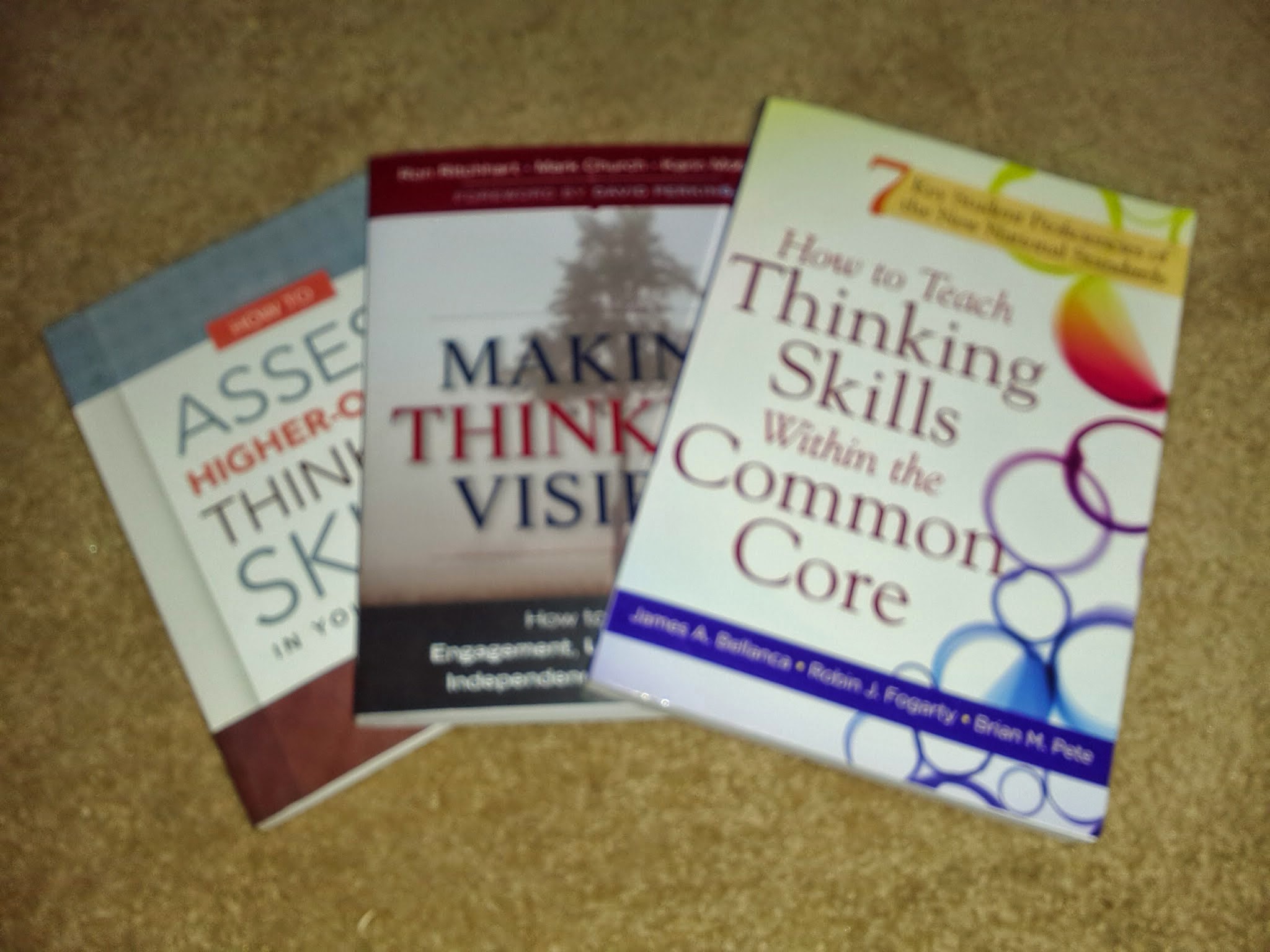“Think harder,” I sometimes hear a teacher say, and I, too,
have said it many times.
What I’ve come to realize, though, is that students have
already retrieved their answer, and if they’ve given me an incorrect response,
they don’t know the answer, so all I’m getting at this point from them is a
guess.
In truth, the question must not have been much of a thinking
question if there was a single correct answer.
That question most likely only required recall.
We need recall; there’s a good bit of information that we
need to be able to retrieve instantly so we store it in our brains to be able
to recall it at just the right times to support our thinking. There are also lots of facts that don’t have
to be stored in our brains; thanks to resources like Google, we can look up
information on the go.
More importantly, we must teach students higher order
thinking skills; teaching critical thinking involves more than asking a
question. Not only must we move toward
asking students to do higher level thinking, but also we must teach them how to think.
Webb’s Depth of Knowledge classifies the ability to recall
facts, information, and procedures as a Level 1 skill, namely Recall &
Reproduction. Much of what we ask students
to do fall into DOK1: define vocabulary,
list information given in class, match terms, answer the 5Ws & H. We repeatedly find these exercises in
workbooks, worksheets, oral discussions, and on assessments.
A common misconception is that all open ended responses
require critical thinking. Not so. Questions requiring students to fill in the
blank to define a term or to list the steps of a procedure are DOK1. The questions may be difficult because the
student has to remember the information, but the question does not require
critical thinking; those questions may not even require understanding.
Avoid the trap of believing that difficult questions require
critical thinking and easy questions do not.
Difficulty does not equal rigor.
Rigor comes about from the mental processing required to produce a
response. Similarly, an easy question could require critical thinking.
When we ask students to apply what they’ve learned, we move
up the ladder to DOK2. Determining cause
and effect (versus listing causes & effects memorized from notes),
comparing and contrasting ideas, interpreting passages, making observations in
a science lab, summarizing, and using context clues to gain meaning are
examples of work at this level.
With strategic thinking, DOK3, students develop logical
arguments, support their positions with evidence, critique others, draw
conclusions, analyze, hypothesize, and use their knowledge to solve unusual
problems.
Extended Thinking, DOK4, occurs when students investigate
problems, synthesize ideas from multiple sources, make connections, evaluate
claims, and compose or create original works.
In a previous blog, I wrote about the skill of analysis, and
I provided an example of breaking down the Preamble of the U.S. Constitution to
demonstrate analysis. We cannot tell
students to analyze something without giving them the instruction that teaches
them how to analyze. To do so would be assigning, not teaching.
Increasing the rigor of our courses necessitates requiring
critical thinking from students. How
often do you assess the quality of your questions? Are you asking students to think
critically? Revisit your most recent
test to label each item as DOK1, DOK2, DOK3, or DOK4. List the questions you will ask in a class
discussion and label their DOK levels.
I challenge you to increase the amount of critical thinking
you ask students to do in your discussion and on your next assessment. But before
you do so, make sure you teach them how.
For example, if we ask students to evaluate, they will need
to first establish the criteria against which they will evaluate the
subject. What evidence will be used to
determine the subject’s value? How well does the subject measure up to the
established criteria? Teaching students
to work through the various steps of the process is necessary if students are
to perform the critical thinking skill of evaluation.
Likewise, students need to be taught how to explain. An explanation includes a statement of the
big idea supported by details in order to make the topic clear and
understandable. Provide students with an explanation of an explanation. Show them the elements that constitute a good
explanation and offer models of explanations to help them learn this skill.
Effective teachers teach thinking skills and provide a
plethora of opportunities for students to practice these skills.
* * *
There are some helpful resources available to help teachers
better understand thinking. Bellanca,
Fogarty & Pete’s How to Teach
Thinking Skills within the Common Core offers numerous teaching ideas. Their text provides an analysis of several
essential skills to help teachers understand the necessary elements of
each. Making Thinking Visible is Reinhardt, Church & Morrison’s contribution.
This book provides exercises to teach thinking skills. Brookhart’s How to Assess Higher-Order Thinking Skills
in Your Classroom provides some additional fodder to deepen teachers’
understanding and expand their skill base.

No comments:
Post a Comment